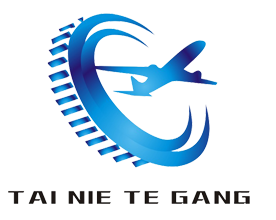
29
2022
-
09
C919 commercial landing, high temperature alloy is the last breakthrough in aircraft manufacturing
Superalloys for aircraft engines
For aircraft, engine is one of the most critical components. Blade of aircraft engine and disc of high pressure compressor must be used under high temperature, and bear great pressure in work. Under such harsh service conditions, aluminum alloy can not withstand very high temperature, and the density of steel is higher, which can not provide a high thrust weight ratio. Titanium based alloy has high high temperature strength, creep resistance, oxidation resistance and specific strength. It is an excellent aeroengine material, especially suitable for aeroengines.
Aircraft engine parts need good high temperature endurance strength, instantaneous strength, heat resistance, organizational stability and high temperature creep resistance. Beta superalloy can not be used in aeroplane engine because its high temperature resistance and creep resistance are obviously reduced. The superalloy has good high-temperature durability and creep resistance, and is suitable for use in high-temperature working environment.
For an aeroengine, its core performance index is the engine thrust weight ratio, which is the ratio of engine thrust to engine weight. In the early days, the thrust weight ratio of aircraft engines was about 3, but now the thrust weight ratio of aircraft engines can reach more than 10. For aircraft engines, the higher the thrust weight ratio, the better the engine performance.
Although nickel base superalloy has good high temperature properties, its thrust weight ratio is lower than that of superalloy. The aircraft engine is made of high temperature alloy, which can give consideration to excellent high temperature performance and high thrust weight ratio. In foreign advanced aircraft engines, the amount of superalloy accounts for 25% - 40% of the total weight of the engine, and with the development of technology, its amount is also increasing. For example, the content of superalloy used in the third generation aircraft engine is 25%, and the content of superalloy used in the fourth generation aircraft engine is 40%.
Superalloy for aircraft body
The materials used for aircraft engines are required to have good high temperature performance and high specific strength performance, while the materials used for aircraft bodies are required to have good medium temperature strength, corrosion resistance, low density and other properties. The high-temperature alloys widely used on aircraft engine fuselage are: β- 21S (Ti-15Mo-3Al-2.7Nb-0.2Si), Ti-10-2-3 (Ti-10V-2Fe-3Al), Ti-15-3 (Ti-15V-3Cr-3Al-3Sn), Ti-3Al-8V-6Cr-4Mo-4Zr, etc.
In terms of medium temperature strength, superalloys have better medium temperature strength than aluminum alloys. The use temperature range of traditional aluminum alloys does not exceed 130 ℃. Aluminum alloys cannot continue to be used at higher temperatures, but superalloys can maintain their strength properties at medium temperature.
As far as corrosion resistance is concerned, on the one hand, most of the supporting structures of aircraft are in contact with the kitchen and toilet of the aircraft. If steel structures are used, corrosion is easy to occur. High temperature alloy materials have excellent corrosion resistance, and no surface anti-corrosion coating or electroplating oxidation resistant coating is required, which can save costs and production processes. On the other hand, many parts of aircraft are made of high polymer materials and superalloys, which have good compatibility with a variety of composite materials.
Compared with steel and nickel base superalloy, in terms of low density, superalloy materials have higher specific strength, can better reduce the weight of aircraft, and can provide higher thrust weight ratio for aircraft. Compared with aluminum alloy, superalloy materials can provide higher strength under the same weight. In terms of the material selection of the landing gear of the aircraft, the landing gear of the Boeing 747 is made of high-temperature alloy. When selecting aluminum alloy, when carrying the required weight, the volume is too large to meet the requirements; When selecting steel, the weight is too large to meet the requirements. High temperature alloy forgings can be used for both purposes to achieve the best performance.
Superalloys are used for aviation fasteners.
In foreign countries with developed aviation manufacturing industry, such as the United States and France, more than 90% of high-temperature alloy fasteners are made with TC4 (Ti6Al4V). The alloy has the advantages of low density, simple composition, good fatigue property and low price. Other materials used for fasteners are TB2, TB3, TB8 and other superalloys. Aviation materials have low quality requirements, corrosion resistance, high temperature resistance, and no magnetic properties.
High temperature alloy is used for aviation fasteners, which can effectively reduce the weight of aircraft. This technology can effectively improve the thrust weight ratio of the space shuttle and reduce the cost of the space shuttle. Titanium materials have excellent corrosion resistance. They have similar electrode potential with carbon fiber composites for aviation, and can effectively prevent the corrosion of aviation fasteners. The high temperature resistance of superalloy is superior to that of aluminum alloy, and it does not contain magnetism and has strong anti magnetic interference ability. It is an excellent material for fasteners of aircraft.
Data source: Research progress of aviation superalloys











